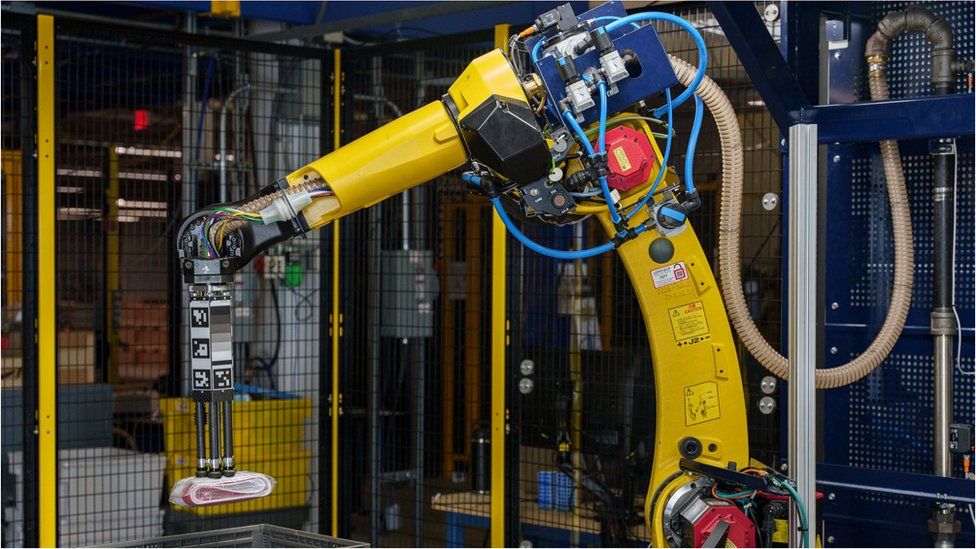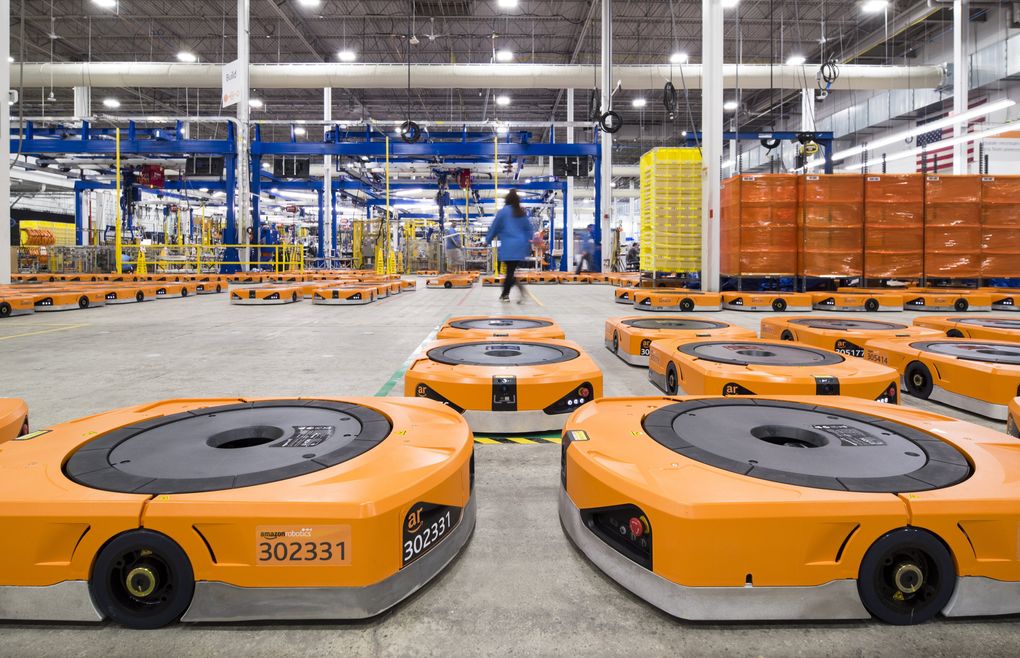
Like any technological advancement, AI has both benefits and downsides. In this article, we will examine the pros and cons of AI technology in detail.

Image credit Mike MacKenzie: www.vpnsrus.com
One of the significant advantages of AI technology is increased efficiency and productivity. AI can automate tasks and processes that would otherwise require human intervention. This automation can result in increased efficiency and productivity in a wide range of industries, from manufacturing to healthcare. Amazon's warehouse robots and drones can pick and pack items faster than humans, leading to increased efficiency and productivity.
Another significant benefit of AI is improved accuracy and precision. AI algorithms can analyze data with greater accuracy and precision than humans, leading to improved decision-making and better outcomes. This can be particularly beneficial in industries such as healthcare, where AI can help diagnose diseases with greater accuracy and provide more personalized treatment options. IBM's Watson for Oncology uses AI to analyze patient data and provide personalized treatment recommendations, leading to improved accuracy and precision in cancer treatment.
Automation can also lead to reduced costs and increased profitability. By automating repetitive tasks, AI can reduce labor costs and increase profitability. Additionally, AI's ability to process large amounts of data quickly and efficiently can result in cost savings and improved profitability in industries such as finance and marketing. JP Morgan Chase uses AI to analyze financial data and automate tasks such as fraud detection, leading to reduced costs and increased profitability.
AI can also perform repetitive tasks that may be tedious or dangerous for humans. For example, robots equipped with AI can perform dangerous tasks in hazardous environments, reducing the risk of injury to human workers. Tasks such as writing emails, creating social media posts and responding to customer service requests can already be offloaded onto AI writing tools or chatbots.
AI can also help tailor products and services to individual needs and preferences. By analyzing customer data, AI can make personalized recommendations and offer targeted marketing, improving the customer experience. Netflix uses AI to recommend movies and TV shows based on viewing history and preferences.
AI has the potential to boost creativity and innovation by generating fresh ideas and solutions. It can provide insights and recommendations that enhance decision-making. By analyzing data and identifying patterns that humans may not have considered, AI can lead to new discoveries and innovations. For instance, a language learning app such as Babbel could use AI to analyze user data and provide supportive lessons to students to improve their language skills. 1
Finally, AI can increase safety in certain industries, such as transportation, where self-driving cars can reduce accidents caused by human error. AI can also improve safety in manufacturing and construction by automating dangerous tasks. Tesla's Autopilot technology uses AI to assist drivers and prevent accidents, leading to increased safety on the road.

Image credit: Ian MacLellan / The Seattle Times.
Despite its many benefits, AI technology also has its downsides. One of the most significant drawbacks is job displacement and unemployment. AI can replace human workers in certain industries, leading to job loss and unemployment. This can be particularly challenging for workers in industries such as manufacturing and transportation. Foxconn, a major electronics manufacturer, replaced 60,000 workers with robots, leading to job loss and unemployment.
AI can also perpetuate existing societal inequalities if algorithms are biased or if the data used to train the AI is biased. This can have serious implications for society and can perpetuate discrimination and inequality. For example, facial recognition software has been shown to be biased against people of color and women. Amazon's AI-based recruitment tool was found to be biased against women, leading to discrimination in hiring practices..
AI can also lack transparency and accountability. It can be difficult to understand how decisions are made and who is responsible. This can make it challenging to address issues such as bias and unfair outcomes. Facebook's News Feed algorithm has been accused of failing to be transparent, and the company has been criticized for its lack of accountability for the spread of misinformation on its platform.
Overreliance on AI without human oversight can lead to unintended consequences and mistakes. For example, in 2018, a pedestrian was killed by a self-driving Uber car in Arizona, highlighting the potential dangers of overreliance on AI without human oversight.
AI relies on vast amounts of data, raising concerns about data privacy and security. The use of AI in fields such as healthcare and finance can raise ethical concerns about data privacy and security. The Cambridge Analytica scandal revealed how AI can be used to manipulate user data and influence political outcomes, raising serious ethical concerns about data privacy and security.
AI can also be used for malicious purposes, such as cyber attacks and surveillance. This can lead to serious ethical concerns and potential harm to individuals and society. Deepfake AI could be used to create convincing images, audio and video hoaxes.
Finally, AI can be complex and difficult to understand, making it challenging to interpret and regulate. This can lead to unintended consequences and unexpected outcomes, as demonstrated by accidents involving self-driving cars.
In conclusion, it is important to carefully consider both the benefits and downsides of AI technology as it continues to advance and become more integrated into our daily lives. By doing so, we can ensure that we use AI technology to its full potential while minimizing the potential downsides and addressing any ethical concerns that may arise.

